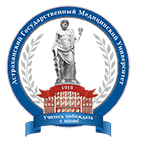The article presents the results of the quantitative content of the sum of phenol carboxylic acids in the Salvia Stepposa Schost. feedstock. It was experimentally confirmed that the optimal extractant when extracting the sum of phenol carboxylic acids from the Salvia Stepposa Schost. feedstock. is 70 % ethyl alcohol. The maximum content of the sum of phenol carboxylic acids is noted in extracts obtained from samples of raw materials ground to particle size passing through a sieve with a diameter of holes of 2 mm. The content of the total phenol carboxylic acids is: in leaves - 1,43 %, in flowers - 1,22 % and in grass - 1,74 %. The obtained experimental data can be used in the development of regulatory documentation for a new type of medicinal vegetal raw material “Sage of steppe grass”.
Salvia Stepposa Schost, phenolic carboxylic acids, quantitative determination, spectrophotometry
1. Golovkin B. N., Rudenskaya R. N., Trofimova I. A., Shreter A. I. Biologicheski aktivnye veschestva rastitel'nogo proishozhdeniya : v 2 t. M.: Nauka, 2001. T. I, II. 764 s. 2.
2. Shukshina S. S., Nigmatullina R. R. Soderzhanie fenolkarbonovyh kislot v plodah maliny // Prioritetnye nauchnye napravleniya : ot teorii k praktike. 2016. T. 25, № 1. S. 12-16.
3. Merkl R., Hradkova I., Filip V., Smidrkal J. Antimicrobial and antioxidant properties of phenolic Alkyl esters // Czech Journal of Food Sciences. 2010. Vol. 28, № 4. P. 275-279.
4. Kulikov A. A., Vdovenko V. S. Metody opredeleniya kachestvennogo i kolichestvennogo sostava fenolkarbonovyh kislot v rastitel'nom syr'e // Agrarnyy vestnik Yugo-Vostoka. 2020. T. 2, № 25. S. 18-21.
5. Ambigaipalan P., de Camargo A. C., Shahidi F. Identification of phenolic antioxidants and bioactives of pomegranate seeds following juice extraction using HPLC-DAD-ESI-MSn // Food Chemistry. 2017. Vol. 221. P. 1883-1894.
6. Mahatova B. G., Dathaev U. M., Burda N. E., Kislichenko V. S. Opredelenie fenolkarbonovyh kislot v syr'e Verbascum Songaricum // Vestnik KazNMU. 2015. № 4. S. 521-523.
7. Matkowski A., Woźniak D., Lamer-Zarawska E., Oszmiański J., Leszczynska A. Flavonoids and phenol carboxylic acids in the oriental medicinal plant Astragalus membranaceus acclimated in Poland // Zeitschrift für Naturforschung. C, Journal of biosciences. 2003, Vol. 58, no. 7-8. P. 602-604. doi:https://doi.org/10.1515/znc-2003-7-826.
8. Sannikova E. G., Popova O. I., Kompanceva E. V., Frolova O. O. Izuchenie fenolkarbonovyh kislot pobegov ivy trehtychinkovoy, proizrastayuschey na Severnom Kavkaze // Farmaciya i farmakologiya. 2015. T. 2, № 9. S. 13-17.
9. Itagaki S., Kurokawa T., Nakata C., Saito Yo. In vitro and in vivo antioxidant properties of ferulic acid : a comparative study with other natural oxidation inhibitors // Food Chemistry. 2009. Vol. 114. P. 466-471.
10. Gohil K. J., Kshirsagar S. B., Sahane R. S. Ferulic acid - a comprehensive pharmacology of an important bioflavonoid // International Journal of Pharmaceutical Sciences and Research. 2012. Vol. 3 (1). P. 700-710.
11. Zduńska K., Dana A., Kolodziejczak A., Rotsztejn H. Antioxidant Properties of Ferulic Acid and Its Possible Application // Skin Pharmacol Physiol. 2018. Vol. 31 (6). R. 332-336. doi:https://doi.org/10.1159/000491755.














